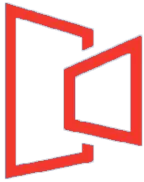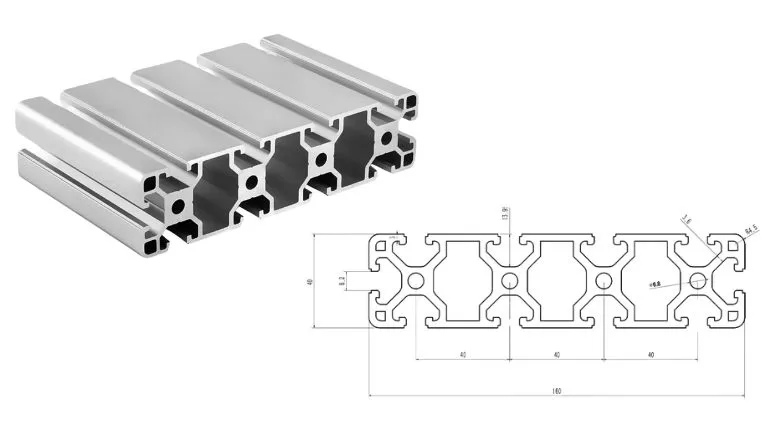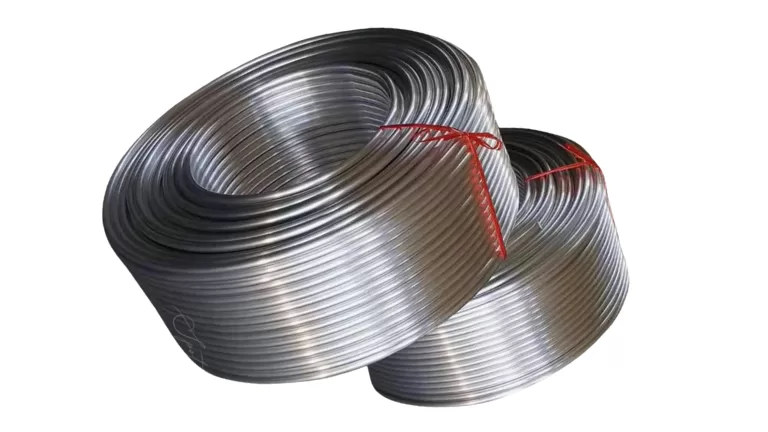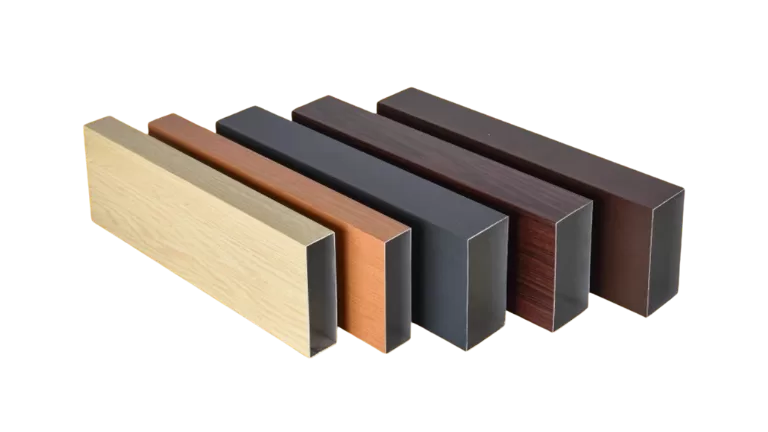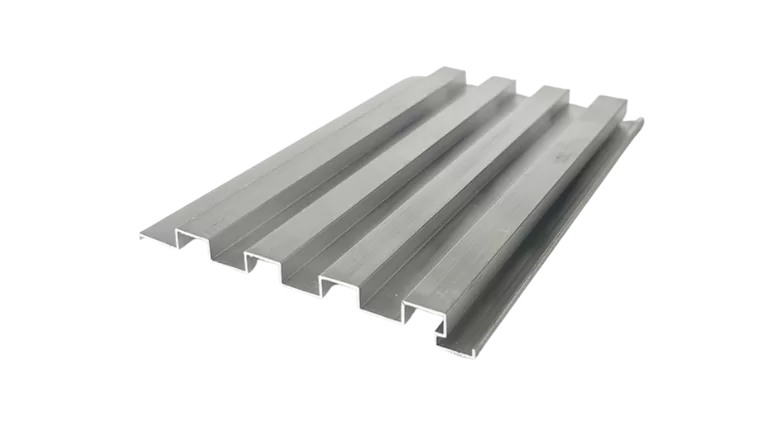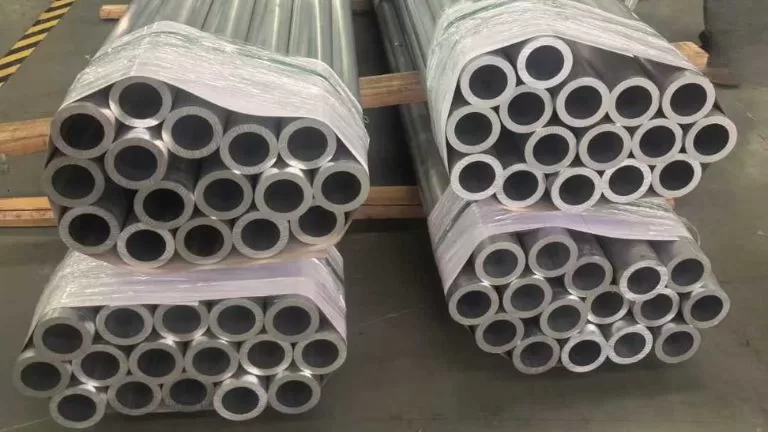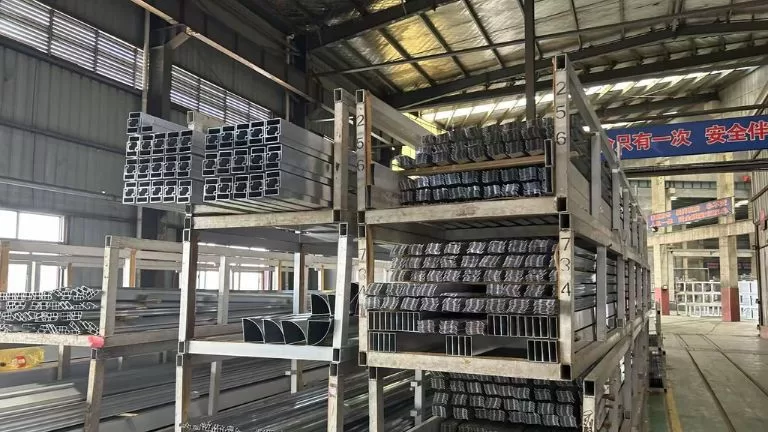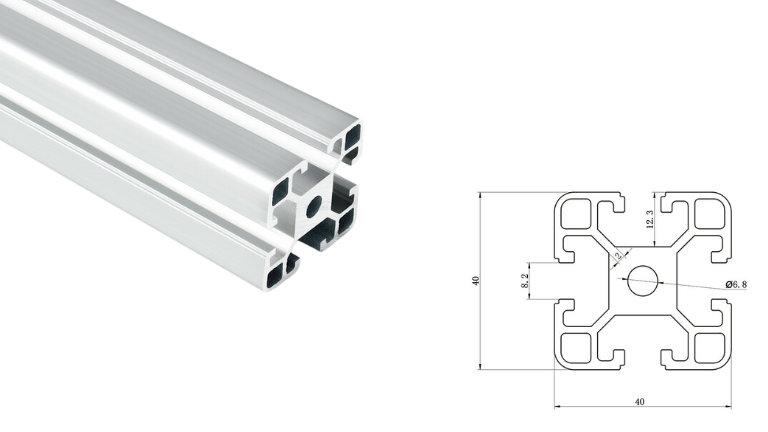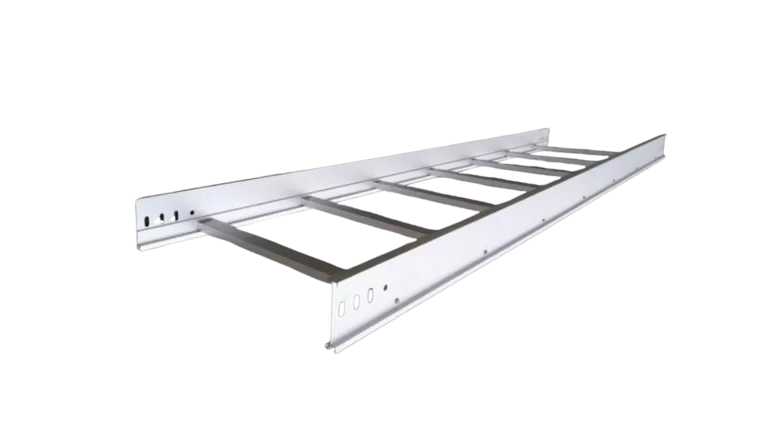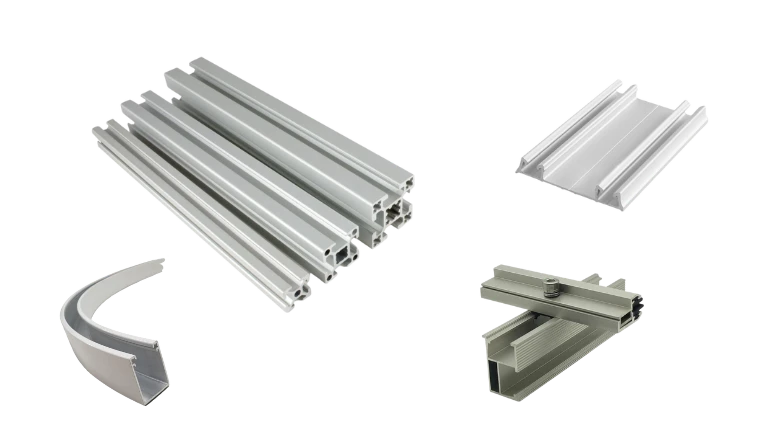Custom Extruded Aluminum Porch Railing Profile

Aluminum porch railing is a strong, lightweight, and stylish safety system for balconies, porches, verandas, and patios. Made from precision-extruded aluminum alloy, these railings provide excellent strength, weather resistance, and require little maintenance. Compared to steel or wrought iron, aluminum railings are more corrosion-resistant, offer more finish options, and are easier and cheaper to install and maintain.
As a dedicated Chinese aluminum porch railing manufacturer, we provide fully customized solutions for large-scale projects. Our custom aluminum extrusion process transforms high-grade aluminum alloy into tailored porch railing profiles that meet your architectural and structural requirements.
Common Types of Aluminum Porch Railing
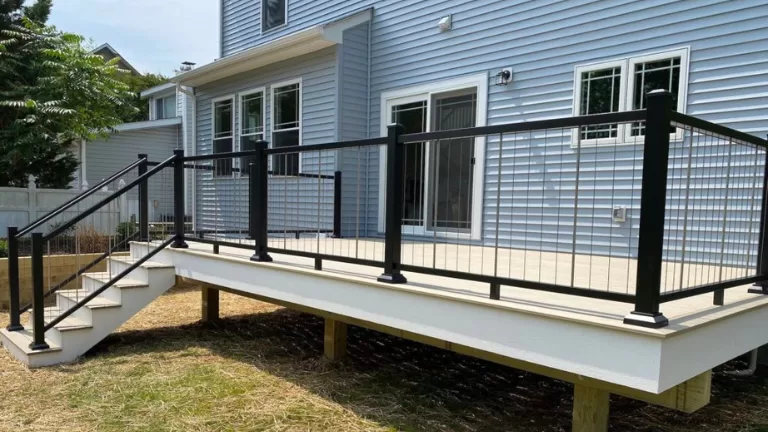
Cable Railing Systems
Combines sturdy aluminum posts and rails with marine-grade stainless steel cables. Offers a minimalist style with excellent outdoor visibility—often used for decks with scenic views.

Horizontal Rail Systems
The classic design, featuring a top and bottom rail with vertical balusters or pickets in between. This is the most common and versatile type for residential porches.
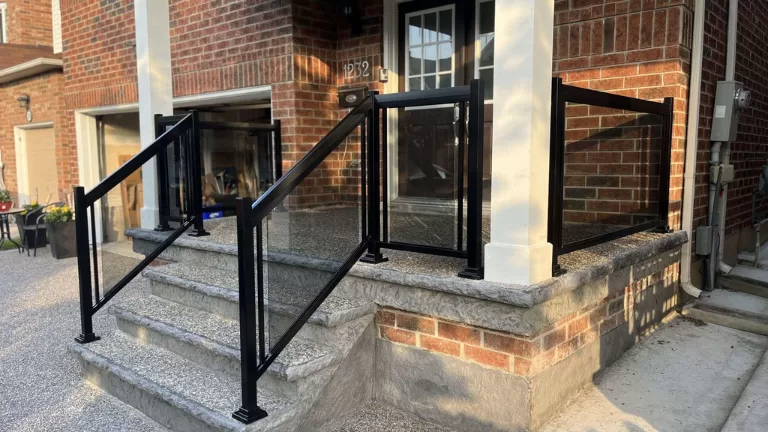
Glass Infill Aluminum Railing
Uses extruded aluminum profiles to frame clear or frosted tempered glass instead of traditional balusters, creating a modern, unobstructed look that’s popular for upscale homes and commercial spaces.
Category Classification of Porch Railing
Top & Bottom Rail Sections
Customizable main horizontal components, available in a variety of cross-sections (flat, round, T-shaped, decorative). Options for integrated channels to hold balusters or glass panels.
Baluster/Spindle Profiles
Vertical infill elements—including square, round, or decorative designs. Aluminum alloy balusters resist weathering and deforming, keeping your porch safe and attractive for years.
Post & Support Columns
Heavy-wall extruded aluminum posts provide structural support. Designed for easy installation and integration with top/bottom rails, with optional base plates and covers.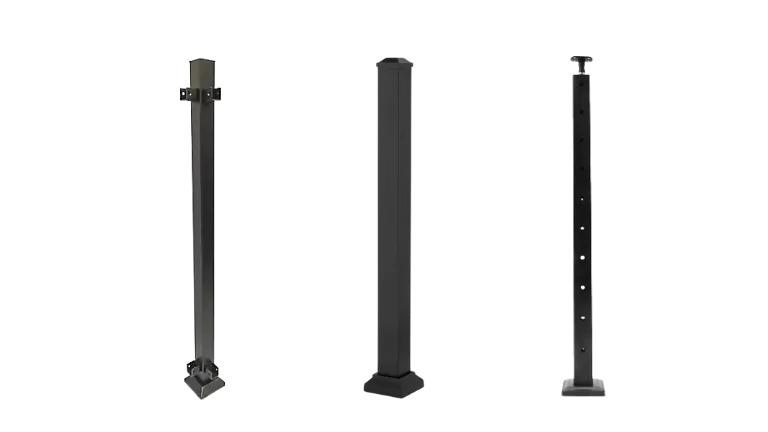
Aluminum Profile Processing Capabilities
As a leading manufacturer of aluminum porch railing in China, we specialize in delivering high-quality, custom railing solutions for residential and commercial projects worldwide. Our services cover the entire process—from professional design and mold development to precision extrusion, surface treatment, and on-demand fabrication. With fully integrated production lines, we ensure every aluminum porch railing system offers outstanding durability, a flawless finish, and meets the exact specifications of our clients. Whether you need classic, modern, or custom-designed railing, we are dedicated to meeting your project’s unique requirements with reliable quality and responsive service.
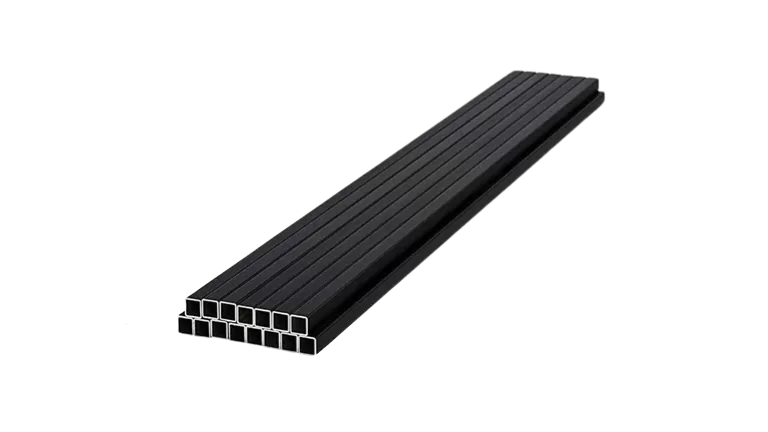 Our production facility is equipped with over 40 advanced extrusion lines, including high-tonnage presses dedicated to producing top-quality aluminum railing profiles. This allows us to manufacture porch railing components in a wide range of sizes and designs, from classic balusters to contemporary glass or panel systems. Our flexible manufacturing processes ensure we can fulfill both standard and highly customized railing requirements for residential and commercial projects, delivering precision, consistency, and exceptional finish every time.
Our production facility is equipped with over 40 advanced extrusion lines, including high-tonnage presses dedicated to producing top-quality aluminum railing profiles. This allows us to manufacture porch railing components in a wide range of sizes and designs, from classic balusters to contemporary glass or panel systems. Our flexible manufacturing processes ensure we can fulfill both standard and highly customized railing requirements for residential and commercial projects, delivering precision, consistency, and exceptional finish every time.
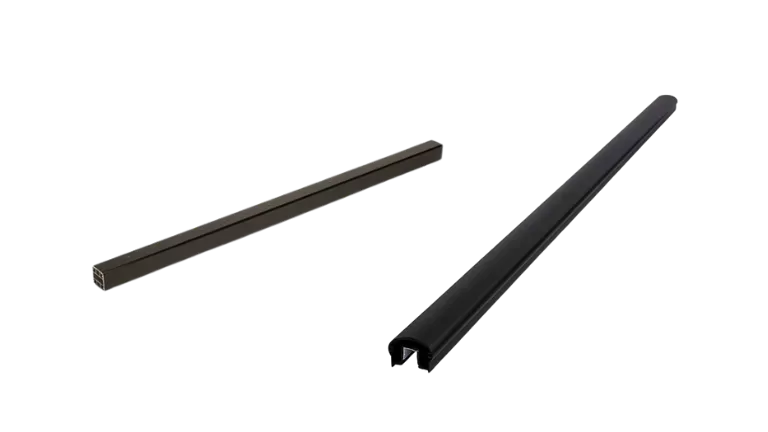 We have extensive expertise in designing and producing in-house molds specifically for aluminum porch railing systems. Our experienced engineers collaborate closely with clients, turning drawings or concepts into precise, custom railing profiles that perfectly match project specifications. The mold development process is efficient—usually completed within 7 days. After mold production, we supply railing samples for your approval to ensure the design and quality meet all expectations before starting mass production.
We have extensive expertise in designing and producing in-house molds specifically for aluminum porch railing systems. Our experienced engineers collaborate closely with clients, turning drawings or concepts into precise, custom railing profiles that perfectly match project specifications. The mold development process is efficient—usually completed within 7 days. After mold production, we supply railing samples for your approval to ensure the design and quality meet all expectations before starting mass production.
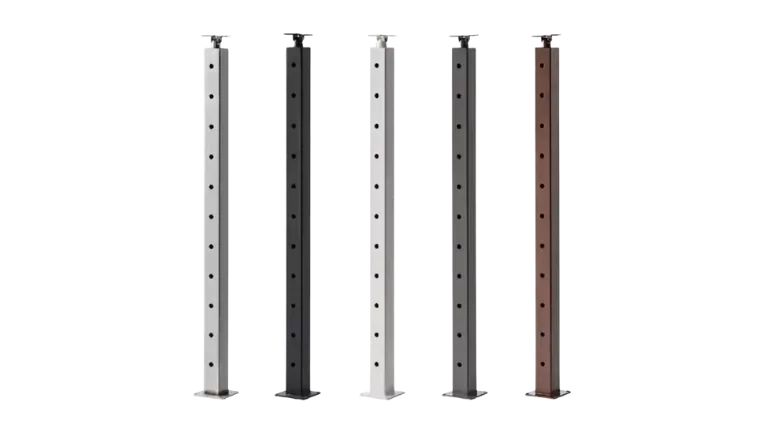 To ensure long-lasting performance and attractive appearance, we provide a range of surface finishing options for aluminum porch railings. Our treatments include anodizing for improved corrosion resistance, powder coating in a wide selection of colors for a stylish look, durable fluorocarbon coatings for harsh outdoor environments, and realistic wood grain finishes to achieve a classic aesthetic. Each finish can be tailored to your project’s design and functional requirements, guaranteeing railing systems that are both resilient and visually striking.
To ensure long-lasting performance and attractive appearance, we provide a range of surface finishing options for aluminum porch railings. Our treatments include anodizing for improved corrosion resistance, powder coating in a wide selection of colors for a stylish look, durable fluorocarbon coatings for harsh outdoor environments, and realistic wood grain finishes to achieve a classic aesthetic. Each finish can be tailored to your project’s design and functional requirements, guaranteeing railing systems that are both resilient and visually striking.
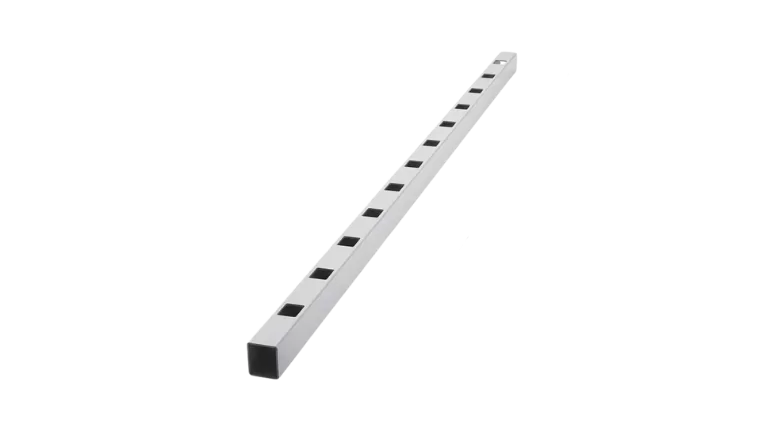 To deliver fully customized aluminum porch railing systems, we provide a comprehensive range of fabrication and processing services. These include precision cutting, CNC machining, drilling, punching, welding, and professional assembly, ensuring every component fits your design perfectly. Our advanced capabilities allow us to supply ready-to-install railing systems, tailored to precise measurements and project requirements, giving you confidence in both quality and convenience.
To deliver fully customized aluminum porch railing systems, we provide a comprehensive range of fabrication and processing services. These include precision cutting, CNC machining, drilling, punching, welding, and professional assembly, ensuring every component fits your design perfectly. Our advanced capabilities allow us to supply ready-to-install railing systems, tailored to precise measurements and project requirements, giving you confidence in both quality and convenience.
Common Aluminum Alloy Grades
1. 6063 Aluminum Alloy
- Usage: Most popular for aluminum porch railing and balusters
- Strength (T5/T6 temper): Tensile ≥ 160 MPa (T5), ≥ 205 MPa (T6)
- Features:
- Excellent surface finish
- Superior corrosion resistance
- Ideal for anodizing or powder coating
2. 6061 Aluminum Alloy
- Usage: Used for main posts or structural components that require extra strength
- Strength (T6 temper): Tensile ≥ 245 MPa
- Features:
- Higher strength
- Good for heavy-duty or commercial railings
- Well-suited for CNC machining and welding

Applications for Aluminum Porch Railing
Custom aluminum porch railings are suitable for:
- Residential balconies, porches, verandas, and garden decks
- Apartment and condominium developments
- Public walkways, parks, and scenic overlooks
- Hotels, resorts, and commercial patios
- Poolside safety barriers and staircases
- Waterfront installations—marinas, piers, seafronts
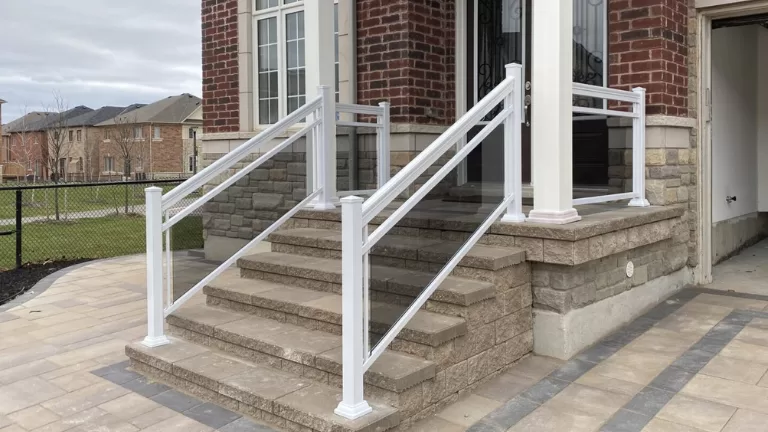
Key Features of Aluminum Porch Railings
1. Weather Resistance
Aluminum alloy railings outperform traditional iron in seaside, high-humidity, or freeze-thaw environments; they remain rust-free with minimal maintenance.
2. Safety & Code Compliance
All profiles can be engineered to meet regional load and safety standards (e.g., IBC/IRC for North America, EN standards for Europe).
3. Design Flexibility
Extrusion allows for any geometric cross-section—modern, traditional, or custom—plus a wide array of colors and textures through surface treatment.
4. Long Lifespan & Easy Maintenance
Unlike steel, alu porch railings don’t require painting or anti-rust treatments on a regular basis—simply wipe clean for a like-new finish.
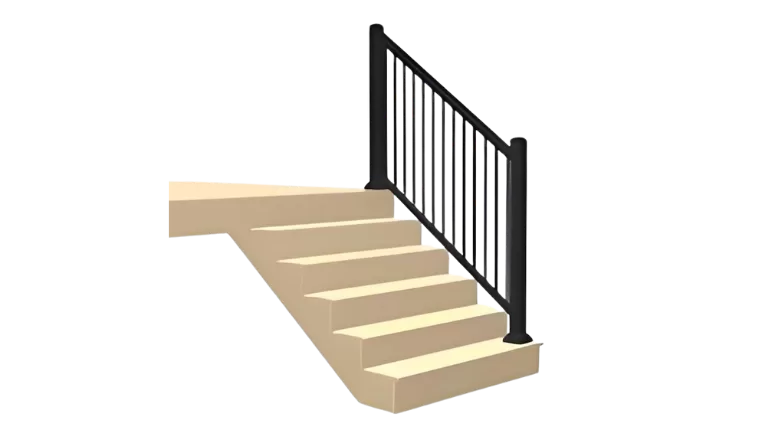
Installation and Maintenance
Aluminum porch railings are designed for easy installation and minimal maintenance, making them an ideal choice for both residential and commercial applications. To ensure long-lasting safety and appearance, please follow these important guidelines:
Installation
- Ensure accurate measurements and mark the installation points.
- Securely anchor posts using suitable fasteners.
- Attach rails and panels between the posts, following the installation guide.
- Check all connections for stability and alignment.
Maintenance
- Clean the railing regularly with mild soap and water.
- Inspect fasteners periodically and tighten if necessary.
- Avoid heavy impacts and quickly address any surface damage to prevent corrosion.

Our Factory
Our factory is equipped with 40 extrusion production lines to efficiently manufacture aluminum profile. We have one anodizing and electrophoresis line, along with two vertical spraying machines and two horizontal spraying machines for surface treatment. Additionally, we operate two sandblasting machines and six wood grain transfer printing lines, enabling us to provide various aesthetic finishes. To support our production, we also have furnaces for casting aluminum bars, aging furnaces, annealing furnaces, water cooling treatment equipment, and machining equipment, ensuring comprehensive capabilities for high-quality output.
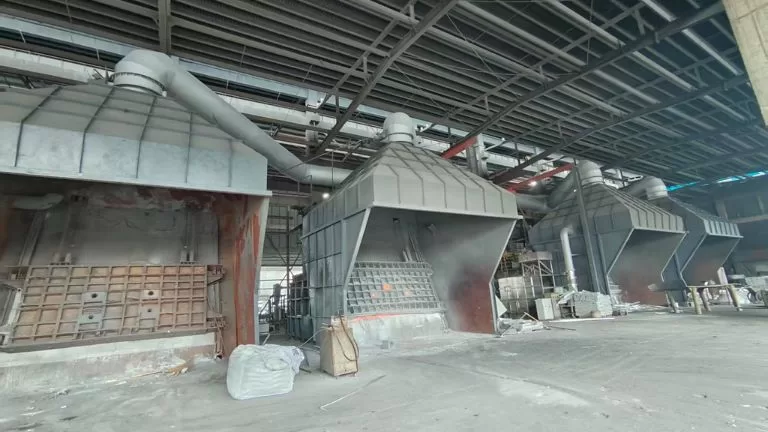
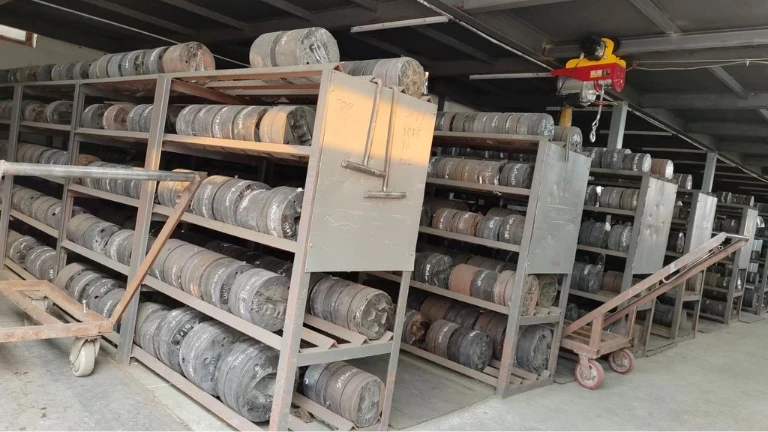

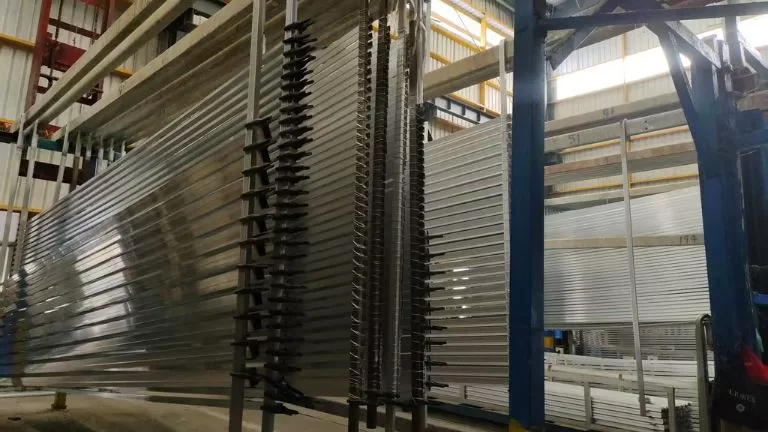
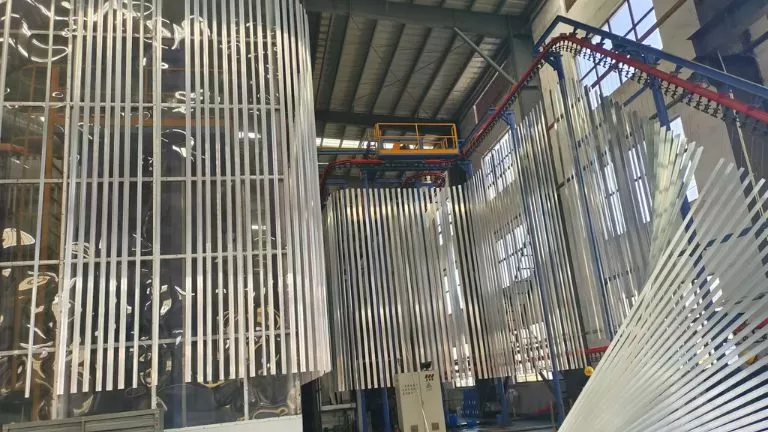
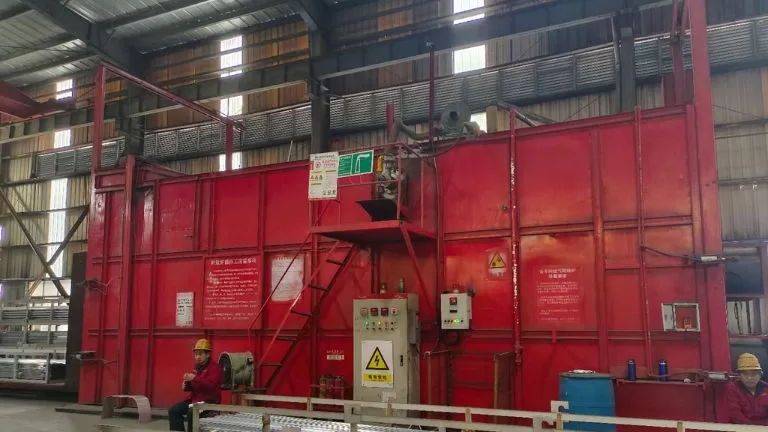

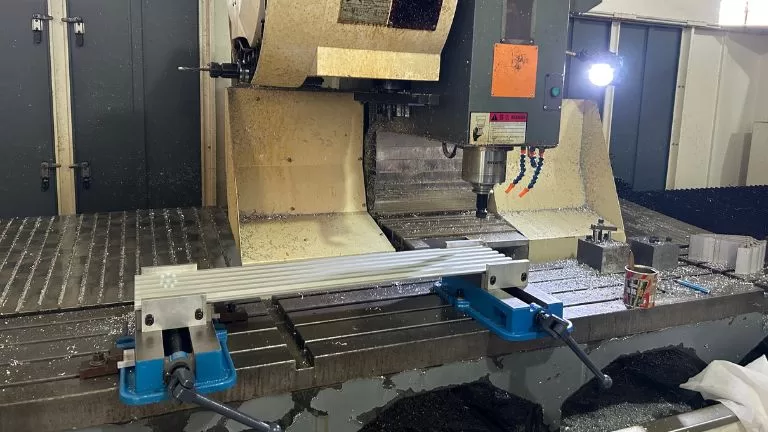
Custom Extrusion from Us
At HTS NEW MATERIALS, we are dedicated to delivering custom aluminum extrusion solutions tailored precisely to your needs. Backed by state-of-the-art manufacturing equipment and more than 40 extrusion lines, we supply high-quality, accurately engineered profiles for a variety of sectors, such as construction, automotive, aerospace, and beyond.
Our custom services include:
- Profile Design: Custom cross-sections made in-house for your application.
- Surface Finishes: Options like anodizing, powder coating, and polishing.
- Precision Fabrication: Cutting, drilling, milling, and CNC machining.
- Alloy Tempers: Choice of T5, T6, and other temper grades.
Choose HTS NEW MATERIALS as your partner for reliable, innovative, and efficient aluminum extrusion solutions designed to support your project’s success.
RFQ of Extruded Aluminum Porch Railing
The primary aluminum alloys used for extrusion belong to the 6xxx series, specifically 6061, 6063, 6060,6082 and 6066. These alloys are highly favored due to their excellent extrudability, good mechanical properties, and corrosion resistance.
- 6061: A versatile alloy with higher strength, suitable for structural and transportation applications.
- 6063: Known as the “architectural alloy,” it offers excellent surface finish and is widely used for decorative and structural purposes.
- 6060: Similar to 6063 but with slightly lower strength, ideal for intricate and thin-walled profiles.
- 6066: A high-strength alloy within the 6xxx series, often used in more demanding structural applications.
- 6082: A strong alloy with better mechanical properties compared to 6061 and excellent corrosion resistance, commonly used in high-load structural applications and in marine environments.
The 7xxx series alloys, such as 7075, are used in applications requiring extremely high strength and performance, such as aerospace and high-end engineering projects. However, they have lower corrosion resistance when compared to 6xxx alloys and are therefore less commonly used for general extrusion applications.
While 1xxx, 3xxx, and 5xxx series alloys can be extruded, they are generally used infrequently for extrusion due to their lower strength or other limitations compared to 6xxx and 7xxx alloys. These series are mainly used in specialized applications. Additionally, if extrusion products from these series are requested, higher minimum order quantities (MOQ) are typically required for custom production, as their demand is relatively low.
The heat treatment of aluminum extrusions determines their mechanical properties, strength, and suitability for specific applications. Among the various heat treatment methods, T5, T6, and T66 are the most commonly used. Here’s an in-depth look:
| Heat Treatment State | Cooling Method | Strength | Key Features and Benefits | Applications |
|---|---|---|---|---|
| T5 | Air cooling (fan) | Moderate | Adequate strength, good dimensional stability, used for architectural purposes. | Windows, doors, curtain walls, building structures. |
| T6 | Water quenching (fast) | High | Higher strength and hardness, ideal for industrial and structural uses. | Automotive, aerospace, machinery, transport parts. |
| T66 | Water quenching (fast) | Very high | Optimized mechanical properties for higher strength and performance demands. | Automotive, rail transportation, high-end machinery. |
Other Heat Treatment States
- T4: Solution heat-treated and naturally aged. Used in applications requiring intermediate strength and enhanced formability.
- T7: Overaged for better stress-corrosion resistance, often used for aerospace and marine purposes.
- O (Annealed): Very soft condition suitable for extensive forming or bending requirements.
- F (As-Fabricated): No heat treatment applied, used in non-critical applications with low strength requirements.
Aluminum extrusions undergo various surface treatments to enhance aesthetics, corrosion resistance, and functionality. Here are the common surface treatment methods used in the industry:
Main Surface Treatment Methods
Anodizing (Oxidation)
- Process: A controlled electrochemical process that forms a protective oxide layer on the aluminum surface.
- Features:
- Provides a durable, corrosion-resistant, and environmentally friendly finish.
- Produces a metallic finish with a variety of natural tones (e.g., silver, black, bronze).
- Improves surface hardness and protects against scratching.
- Applications: Architectural frames, decorative profiles, heat sinks.
Electrophoresis Coating (E-Coating)
- Process: After anodizing, the aluminum is coated with paint using an electrochemical process.
- Features:
- Enhances corrosion resistance and offers a smooth, glossy finish.
- Provides more color and texture variation compared to anodizing alone.
- Applications: Furniture profiles, indoor architectural components.
Powder Coating
- Process: Electrostatic application of powder paint, followed by curing under high temperature to form a solid coating.
- Features:
- Wide variety of colors and textures.
- Excellent weather resistance and corrosion protection.
- Cost-effective and highly versatile.
- Applications: Outdoor frames, fences, railings, general industrial use.
PVDF Coating (Polyvinylidene Fluoride)
- Process: A specialized fluoropolymer coating is applied in multiple layers, commonly over a pretreated surface.
- Features:
- Exceptional weather resistance and UV stability.
- Highly durable, resistant to fading, chalking, and chemical damage.
- Ideal for long-term outdoor use.
- Applications: Curtain walls, high-performance architectural facades.
Wood Grain Transfer Printing
- Process: A heat-transfer printing process that applies a wood grain effect onto a pre-coated aluminum surface.
- Features:
- Mimics the appearance of wood while retaining aluminum’s durability.
- Lightweight and weather-resistant alternative to natural wood.
- Applications: Furniture, decorative coverings, outdoor panels.
Film Lamination
- Process: Adhesive application of a protective or decorative film onto the aluminum surface.
- Features:
- Provides a glossy, textured, or patterned finish.
- Often used for applications requiring specific textures like marble or leather effects.
- Applications: Interior decor, windows.
Pre-Treatment Processes
Prior to surface treatment, the aluminum surface can be pre-processed for specific textures or finishes:
Brushing/Polishing
- Removes surface imperfections and creates a smooth, reflective finish.
- Often used for decorative purposes.
Sanding/Grinding
- Produces a matte or satin finish by applying abrasives.
Shot Blasting/Sandblasting
- Sprays abrasives at high velocity to create a textured surface, often used before anodizing for a uniform appearance.
Stretching and Tension Leveling
- Straightens the aluminum profile and improves shape accuracy after extrusion.
Cost and Durability Comparison Table
| Treatment Method | Process Cost | Surface Durability | Weather Resistance | Applications |
|---|---|---|---|---|
| Anodizing (Oxidation) | Medium | Very Durable | High | Architectural frames, industrial parts. |
| Electrophoresis (E-Coating) | Medium-High | Durable | Medium | Furniture, indoor parts, decorative uses. |
| Powder Coating | Medium | Highly Durable | High | Outdoor frames, industrial fixtures. |
| PVDF Coating | High | Extremely Durable | Excellent | Curtain walls, high-end exteriors. |
| Wood Grain Printing | Medium | Moderate (topcoat dependent) | Medium | Decorative panels, furniture. |
| Film Lamination | Low-Medium | Moderate | Low | Indoor decorations, windows. |
| Brushing/Sandblasting (Pre-Treatment) | Low | Not Applicable (Preparation only) | N/A | Preparation for further treatment. |
. Anodizing (Oxidation)
- Common Colors:
Natural silver
Black
Champagne
Light bronze
Dark bronze
Gold
2. Electrophoresis Coating (E-Coating)
- Common Colors:
Black
Champagne
Light bronze
Dark bronze
Custom metallic colors
3. Powder Coating
- Colors:
Can match any color based on the RAL color chart.
Offers textures like matte, gloss, satin, and custom finishes.
4. PVDF Coating (Polyvinylidene Fluoride)
- Colors:
Also customizable using the RAL color chart.
High-end finishes with matte or glossy effects.
5. Wood Grain Transfer Printing
- Colors and Patterns:
Mimics various wood types (e.g., oak, walnut, teak, mahogany).
Custom patterns available based on provided samples.
6. Film Lamination
- Colors and Patterns:
Includes textures like marble, leather, and solid colors.
Custom finishes and patterns based on provided samples.
Pre-Treatment Options (Impact on Final Color)
- Brushing/Polishing: Produces smooth or reflective metallic surfaces.
- Sandblasting: Adds a rough, matte texture before the final surface treatment.
We provide a wide range of machining services for aluminum extrusions to meet specific requirements. These include cutting off/section removal, slotting, drilling holes, tapping threads, bending, and localized stamping to create deformations. For example, we can trim extruded profiles to custom lengths, mill precise grooves, create threaded holes for fasteners, bend profiles into specific shapes, or apply localized stamping to achieve custom forms or deformation.
In addition to these processes, we also offer TIG/MIG welding to join aluminum components for a solid structure. Furthermore, our services include assembly of common accessories, such as brackets, corner connectors, screws, hinges, end caps, and rubber seals, providing complete and ready-to-install profile solutions tailored to your project needs. This ensures that we can handle everything from simple cuts to highly customized fabrication and assembly, all with precision and efficiency.
For custom aluminum extrusion projects, we accept a variety of drawing formats, including CAD files, STEP files, and PDF files. However, for extrusions that require additional machining processes, it’s recommended to provide STEP files, as they ensure precise 3D modeling for machining accuracy.
While PDF files are acceptable, converting them into CAD drawings may result in the loss of certain details, requiring us to manually redraw the design, which could increase lead time. For the fastest and most accurate quotation, we recommend providing CAD files (e.g., DWG/DXF) and STEP files to ensure efficient design evaluation and pricing.
Mold fees are an essential part of the custom aluminum extrusion process. Since every order requires a uniquely designed mold tailored to specific requirements, these molds cannot be used for other products. Therefore, the mold fee is necessary and non-negotiable.
We require 100% upfront payment of the mold fee before mold development begins to ensure timely production. However, as a token of appreciation for your support, we offer a refund of the mold fee or equivalent discounts once the order reaches a certain production volume. Specific policies can be discussed based on your order volume and collaboration details.
Our minimum order quantity (MOQ) varies depending on the size of the product. For smaller-sized products, the MOQ is typically 500kg, while for larger-sized products, it is 2 tons.
We will specify the exact MOQ requirements during the quotation process. If your order quantity does not meet the MOQ, we can still arrange production, but an additional fee will be applied to cover mold preheating and production setup time. Rest assured, this extra fee will be reasonable, and we aim to keep it as minimal as possible to ensure smooth cooperation.
Packaging can be customized according to your needs. Options include using protective film or paper to separate and protect the surface, or foam film for additional surface protection. Products can be palletized or packed into cartons, and the quantity per pallet or carton can be specified by the customer.
The standard packaging involves bundling several pieces together with plastic wrap and then securing them onto pallets. Any packaging requirements beyond the standard will be accommodated, and the associated costs will be clearly provided to the customer.
Mold production typically takes 7 days. After the sample is confirmed, producing a full container load of 26 tons generally requires 14 days for extrusion alone. If surface treatment is required, an additional 3 days will be needed. For machining, extra time will be required depending on the complexity and volume of the machining work. The exact additional time for machining will be determined based on the specific processing requirements.
Aluminum profiles are naturally corrosion-resistant due to the formation of a thin, protective oxide layer when exposed to air or water. This oxide layer is stable and self-repairing, meaning that even if the surface is scratched or cut (such as at exposed ends or during processing), the aluminum will not rust or corrode like iron or steel. Instead, the exposed areas will quickly form a new oxide layer, providing continuous protection against further oxidation.
With proper design, installation, and maintenance, aluminum profiles can last for decades, even in challenging environments. For example, untreated aluminum can easily withstand 20-30 years in outdoor applications, while profiles with surface treatments like anodizing or powder coating can last even longer, often exceeding 50 years. This makes aluminum an excellent choice for applications where durability and long-term performance are essential.
The price of aluminum profiles consists of several components: raw material costs, extrusion processing fees, surface treatment fees, machining costs, and additional packaging fees. Among these, the cost of aluminum as a raw material tends to fluctuate frequently, while other fees remain relatively stable. Due to these fluctuations, our quotations are typically valid for 7 days.
Pricing can be structured in different ways depending on the product and requirements. It can be calculated by weight (e.g., cost per ton), by length (e.g., cost per meter), or by piece (e.g., cost per unit). For products involving extensive machining, such as heat sinks, pricing is generally calculated on a per-piece basis to accurately reflect the additional processing costs. This flexible pricing approach ensures the quote is tailored to the specific needs of the customer.
We can manufacture aluminum profiles in compliance with technical requirements that meet European standards (EN), American standards (ASTM/AA), or other standards as specified by the customer. Custom production is tailored to ensure that the profiles meet the specific standard requirements requested.
Our production equipment is designed for the metric system. If the drawings provided are in the imperial system, we will convert them into metric units for production to ensure accuracy.
It is important to note that while we can machine imperial-threaded holes for fasteners, if you require us to supply matching imperial fasteners, they may not always be available in stock. Custom orders for imperial fasteners typically require a large volume for production. Please consider this when planning your project.
